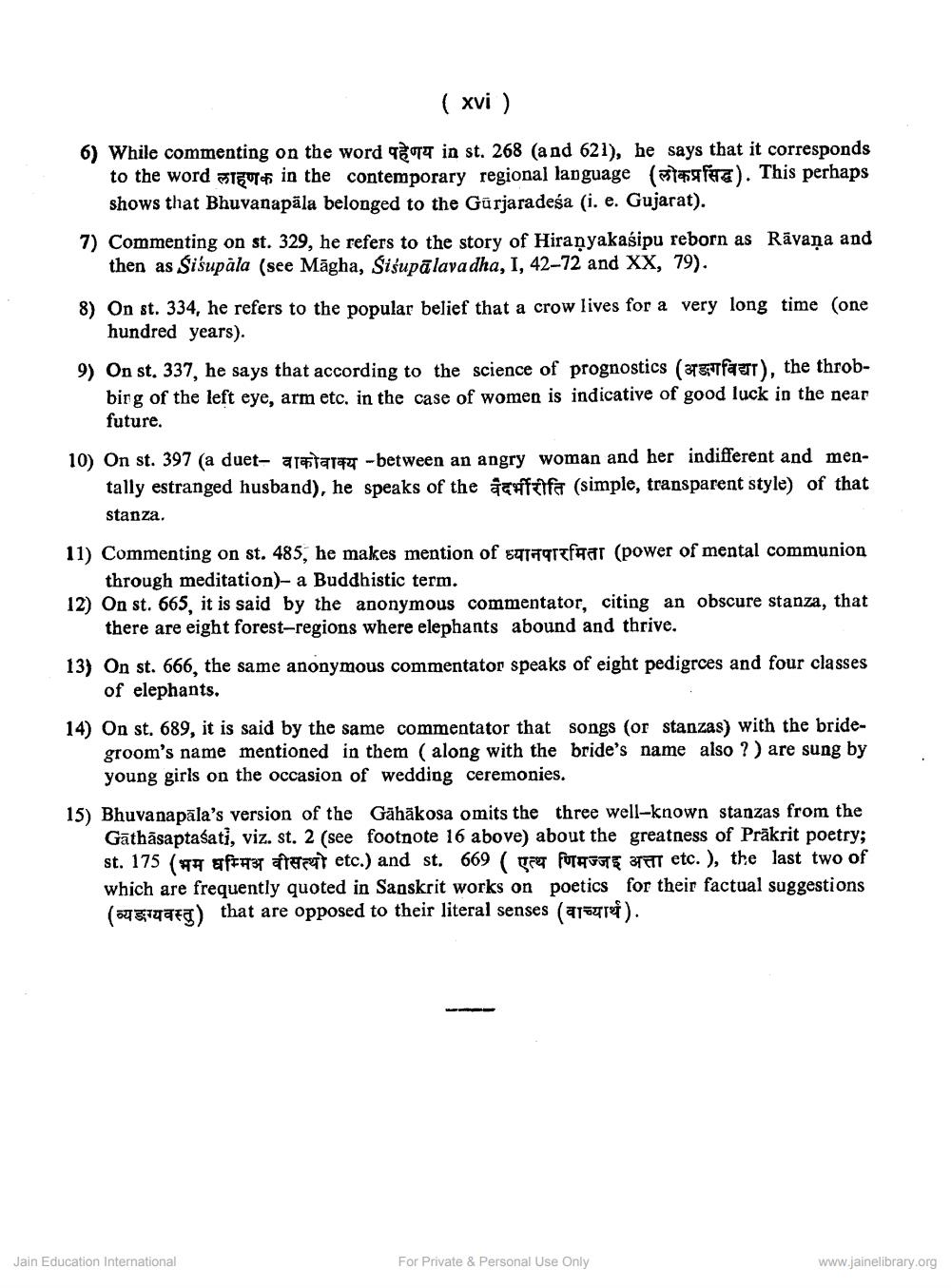________________
( xvi)
6) While commenting on the word Tot in st. 268 (and 621), he says that it corresponds
to the word gut in the contemporary regional language (19fha). This perhaps
shows that Bhuvanapāla belonged to the Gurjaradeśa (i. e. Gujarat). 7) Commenting on st. 329, he refers to the story of Hiranyakaśipu reborn as Rāvana and
then as Sisupala (see Māgha, Sišupālavadha, I, 42-72 and XX, 79).
8) On st. 334, he refers to the popular belief that a crow lives for a very long time (one
hundred years). 9) On st. 337, he says that according to the science of prognostics (375tfar), the throb
birg of the left eye, arm etc. in the case of women is indicative of good luck in the near
future. 10) On st. 397 (a duet- anataray - between an angry woman and her indifferent and men
tally estranged husband), he speaks of the affalfa (simple, transparent style) of that stanza.
11) Commenting on st. 485, he makes mention of stagefnar (power of mental communion
through meditation), a Buddhistic term. 12) On st. 665, it is said by the anonymous commentator, citing an obscure stanza, that
there are eight forest-regions where elephants abound and thrive.
13) On st. 666, the same anonymous commentator speaks of eight pedigrces and four classes
of elephants. 14) On st. 689, it is said by the same commentator that songs (or stanzas) with the bride
groom's name mentioned in them (along with the bride's name also ?) are sung by young girls on the occasion of wedding ceremonies.
15) Bhuvanapāla's version of the Gähäkosa omits the three well-known stanzas from the
Gāthāsaptaśati, viz. st. 2 (see footnote 16 above) about the greatness of Präkrit poetry; st. 175 (9479 EF#37 art etc.) and st. 669 ( ru FUTUTE THT etc. ), the last two of which are frequently quoted in Sanskrit works on poetics for their factual suggestions (qarqara) that are opposed to their literal senses (asure).
Jain Education International
For Private & Personal Use Only
www.jainelibrary.org




